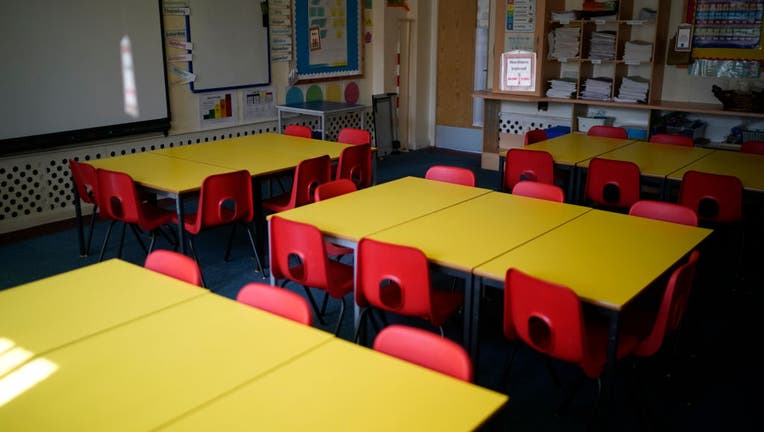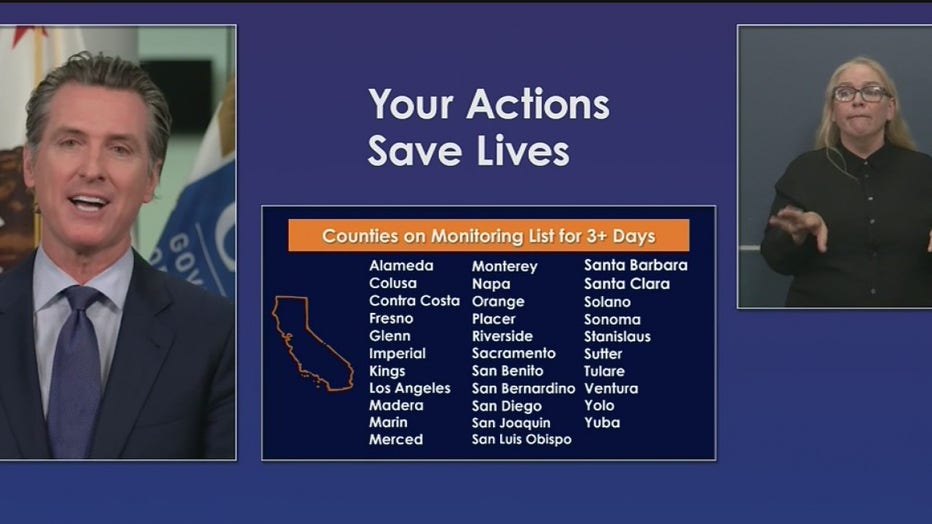Most California schools will begin 2020-21 school year online under Newsom's reopening guidelines

(Getty Images)
SACRAMENTO, Calif. - Gavin Newsom on Friday set widespread reopening guidelines for California’s private, public and charter schools set to begin the 2020-21 school year next month.
RELATED: California Gov. Newsom to give school guidance during pandemic
"Today's announcement is very personal to me as a father of four," Newsom said, noting that the Health and Human Services Dr. Mark Ghaly, a pediatrician, also has four children. As parents, both said they want their children to be educated and as parents, they want to be able to go back to work.
Newsom said he will announce guidelines for colleges and universities in the near future.

Gov. Newsom unveils California education plan
Gov. Gavin Newsom on Friday set widespread reopening guidelines for California’s private and public schools set to begin the new school year next month.
Newsom opened Friday’s briefing by saying California’s bottom line is non-negotiable and schools must provide meaningful instruction during the pandemic whether they are physically open or closed.
He also said students, teachers, staff, and parents prefer in-classroom instruction, but only if it can be done safely.
California’s pandemic plan for schools was broken down into 5 parts:
Safe in-person school based on local health data
• Schools can reopen for in-person education when its county has been off the state's monitoring list for 14 consecutive days.
• Schools that don’t meet this requirement must begin the school year with distance learning.
With this, the greater majority of California schools will begin the fall semester online as most counties are listed on the watch list.

Los Angeles, Riverside, San Bernardino, Ventura, Orange counties remain on California’s Monitoring List. Newsom referred to Southern California as a "stubborn" part of the state in terms of coronavirus cases.
San Diego and Santa Barbara counties also remain on the list.
RELATED: Stay up to date on all coronavirus-related information
Mask requirements
• All school staff and students in third grade and above must wear masks.
• Students in 2nd grade and below are encouraged to wear masks or face shields.
Physical distancing and other adaptations
• Staff must maintain 6 feet between each other and with students;
• Hand-washing stations;
• Sanitation and disinfection;
• Quarantine protocols.
Regular testing and dedicated contact tracing
• Staff will be required to test regularly
•State contact tracing workforce will prioritize schools
Rigorous distance learning
• Access to devices and connectivity for all kids
• Daily live interaction with teachers and other students
• Challenging assignments equivalent to in-person classes
• Adapted lessons for English language learners and special education students
Newsom said that the more people who wear masks, physically distance, wash their hands, and minimize mixing are crucial for slowing the spread of the virus and getting kids back in school.
Get breaking news alerts in the FOX 11 News app. Download for iOS or Android.
Newsom also said schools that are open for in-classroom instruction will be required to close under the following circumstances:
• Schools should consult with a public health officer first
•A classroom cohort goes home when there is a confirmed case
•A school goes home when multiple cohorts have cases or more than 5% of the school is positive
•A district goes home if 25% of their schools are closed within a 14-day period
Earlier this week, the Los Angeles Unified School District, the second-largest district in the nation, announced the school year will start online. Shortly after, several other Southern California school districts made similar announcements. Some planned to offer hybrid learning, with a combination of remote and distance learning.
RELATED:
• LAUSD students won't be returning for in-person classes this fall
• More SoCal school districts opt to start 2020-21 school year online
Dr. Linda Darling-Hammond, the California State Board of Education President, said that further guidelines for students with special needs would be released within the coming weeks.
Darling-Hammond said they are exploring how teachers can provide one-on-one or small group instructions for students with special needs and also mentioned the possibility of specified Zoom breakout rooms.
KTVU contributed to this report.

